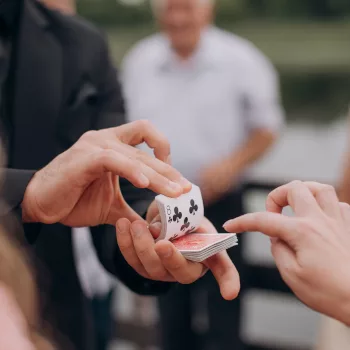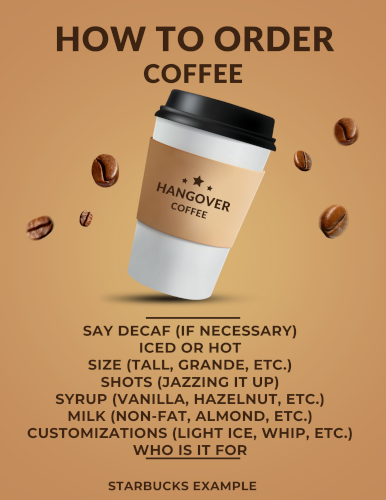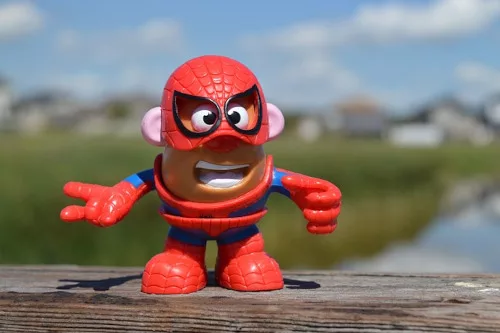
Is Your Morning Coffee Making You Buy Stuff You Don’t Need?
Alright, no Prime Time, T Swizzle, or viral memes this week. You can get your fix of those here, here, and here. This week, we are back digging in some real marketing mojo. So, “Let’s Do this – Leeroyyy Jenkins.”
Can you take a minute to think about what you ate for breakfast this morning? If you don’t eat breakfast, that’s OK. Focus on your caffeine delivery system—the thing that wakes you up, motivates you to conquer the world, or revives your personality.
Don’t eat breakfast or need caffeine? Alright, we get it; you’re better than the rest of us. But don’t blow up the blog before it even starts. Just think of something you recently purchased or enjoyed.
What made you choose that brand of croissant, toaster strudel, flavor of pop tart? What drove you to be a Dunkin or Starbucks aficionado? No, we aren’t talking about an actual car, but what influenced your choice? Do you even know? Has your choice moved from a one-time event to what seems like an addiction to Whatchamacallits?
Did your best friend introduce you to that Decaf – Iced – Medium err Grande – White Mocha – Almond Milk – No Whipped Cream coffee you enjoy every morning*? Do you still crave Brown Sugar Cinnamon Pop Tarts because of your love for Saturday morning cartoons?
*Hat tip to Nolan Black for his blog on the art of Starbucks ordering. Want to get your coffee right off the bat without a barista dressing you down for messing up your adjectives and nouns? Check his blog here.
The real answer is more than likely a psychological tactic known as priming. This sneaky little booger often influences us, and we don’t even know it’s happening. Without diving too deep into Psych 101, priming is all about subtly triggering the subconscious to influence our conscious thoughts and behavior. Yeah, that’s some real David Blaine stuff right there.
So now that we’ve established that priming is basically the David Blaine of psychology, let’s break it down a little bit.
There are two main types of priming:
Semantic Priming: This involves words or images that relate to a product or service. Think of a car driving on an open road with the words “Freedom” prominently displayed in an easy-to-read font.
Perceptual Priming: Here we have sensory stimuli like color and sound to trigger our associations. Just close your eyes and envision your favorite pop (that’s for you people up north) commercial, where a glass fills with bubbly, fizzy goodness.
Don’t mistake this for some Derren Brown-level mentalism or mind-reading. Psychological studies consistently show that priming can significantly influence our behaviors. Whether it’s swaying political choices (eww, let’s skip that icky topic) or nudging our purchasing decisions, the subconscious’s power of priming is more impactful than most of us realize.
Alright, at this point in today’s show we want to shift from the “what” to the “how” by adding in a little dash of the science behind priming. And who better to guide us than the Jedi Master of persuasion himself, Robert Cialdini? In his book, ‘Pre-Suasion,’ Cialdini talks about capturing attention to steer, guide, influence, whatever verb makes you feel good, decision-making. He drops this little nugget: “What we present first changes how people experience what comes next.”
Wait, WHAT!
In the world of Quantum Mechanics, that is some Heisenberg “Uncertainty Principle” right there! But in the world of marketing that’s priming at its finest.
If you have gotten here and you didn’t click on the Derren Brown link, I think you should stop reading and watch the video. It is integral to understanding what comes next.
Since we aren’t writing a book report on ‘Pre-Suasion’, and you may be longing for more nuggets of knowledge, I have an affiliate link at the bottom where you can get your own copy of the book. But in the meantime, let’s take a gander at a couple of examples from the book:
Timing of Questions: Cialdini cites a study where a furniture store aimed to promote a line of sofas. Some customers were asked if they considered themselves adventurous before seeing the sofas. Those who were “primed” by the question leaned towards modern designs over traditional ones. Coincidence? Or maybe it’s time to rethink those questions salespeople throw at you.
Scarcity and Exclusivity: The book talks about hotels striving to get better towel reuse rates by tweaking their message. Instead of saying, “Help save the environment,” they adjusted the messaging to, “Join your fellow guests in helping to save the environment.” This subtle nudge of social proof made hotel-goers more likely to reuse towels. Because let’s face it, nobody wants to be “that guy” who doesn’t care about the planet.
Setting aside the book and the science behind priming, is it even ethical? Ah, the age-old notion that marketers are like hypnotists, who make people cluck like chickens on stage. Let’s be honest. Those folks who go up on stage and act foul, usually want to let loose. It is the same for those of us that hit the car lot “just to look” acting surprised when we are driving off in our new ride.
That aside, marketers should always remember the words of the great thinker and philosopher, Spiderman, “With great power comes great responsibility.”
Till Next Time!
Get your copy of Robert Cialdini’s “Pre-Suasion” at this affiliate link and don’t forget to get his best seller ‘Influence, New and Expanded: The Psychology of Persuasion’ while you are there.
